Abstract
Intestinal helminthic infections in Pemba Island, United Republic of Tanzania, have been perceived as a public health problem for many decades. School surveys in 1988 and 1992 and a community survey in 1991 were carried out to assess the distribution of prevalence and the intensity of these infections and to define the most effective strategy for control. The prevalence of helminthic infections exceeded 85% in all the surveys, and intensity was moderate. These studies identified the high-risk age groups, high transmission areas for different parasites, and the most cost-effective anthelminthic drug. This work is an example of how existing health systems and simple analytical tools may be used to generate useful data which, in turn, are used to define suitable intervention strategies. As a result, the Ministry of Health of Zanzibar has developed a national plan for the integrated control of intestinal helminths. This plan envisages periodic mass treatment of school-age children with mebendazole (500 mg, single dose, every four months) for the control of morbidity due to Ascaris, Trichuris, and hookworms.
Full text
PDF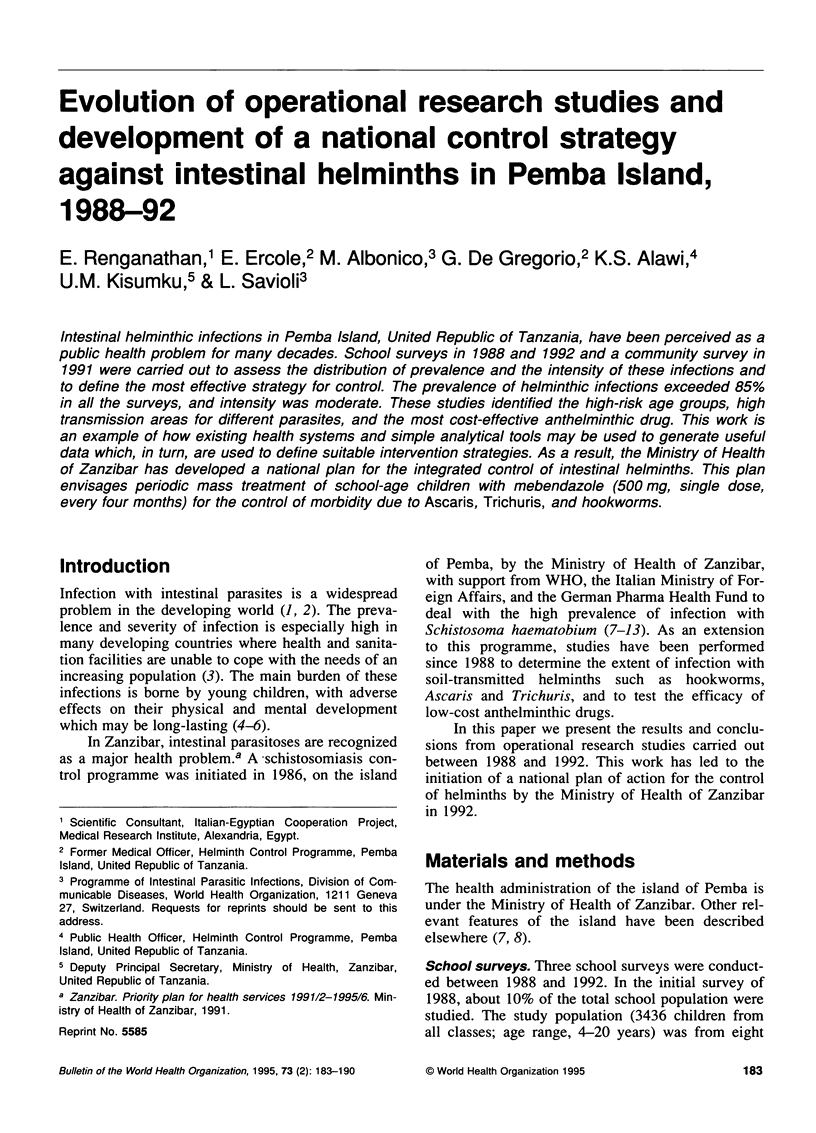
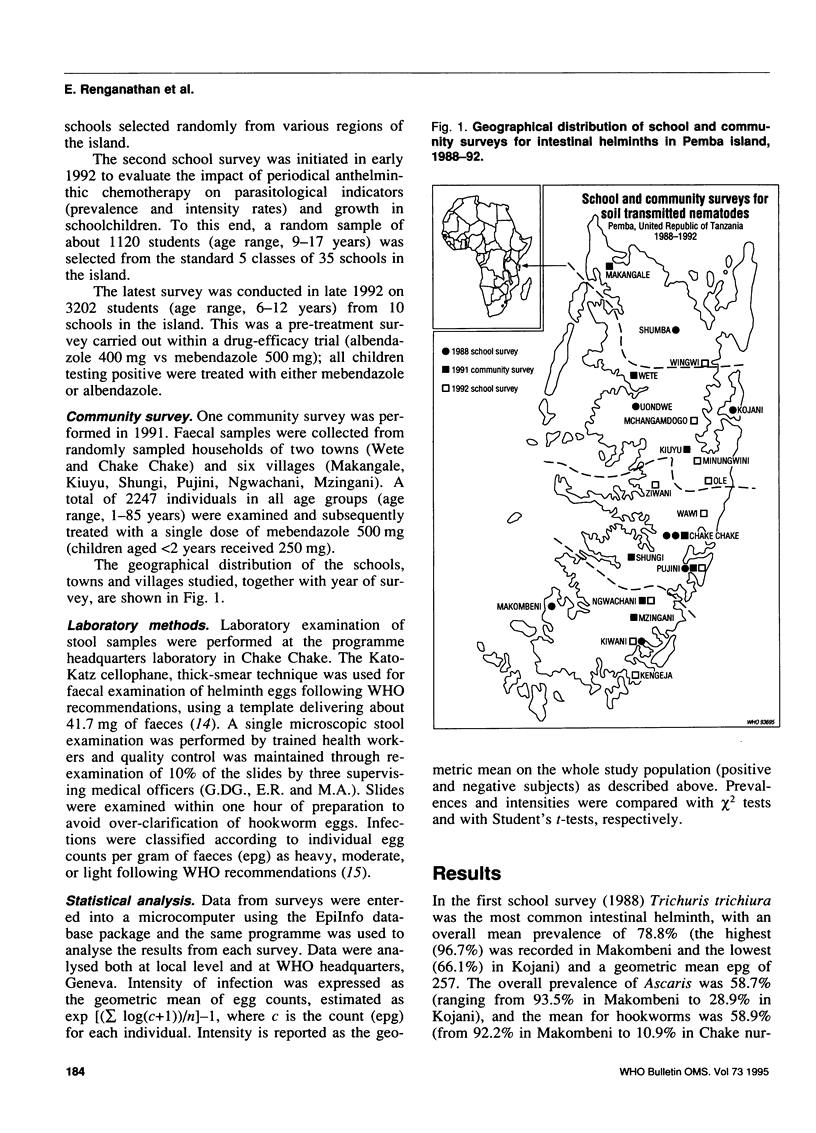
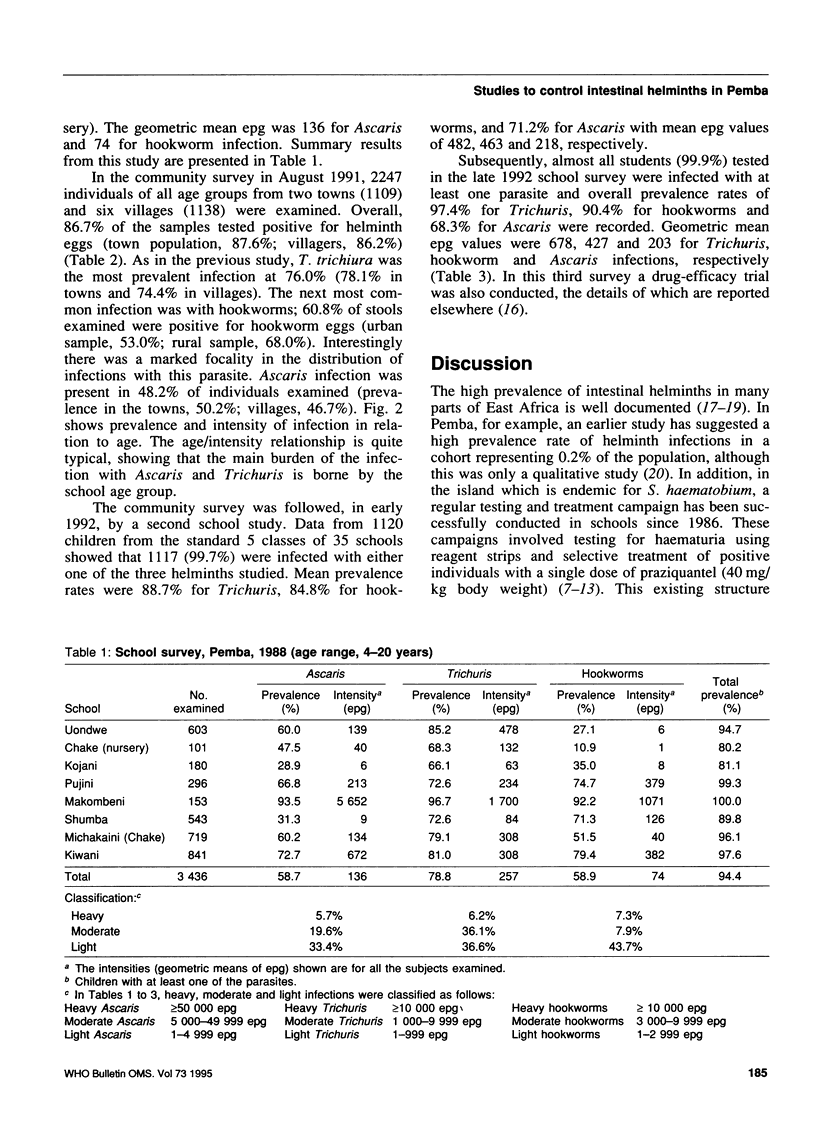
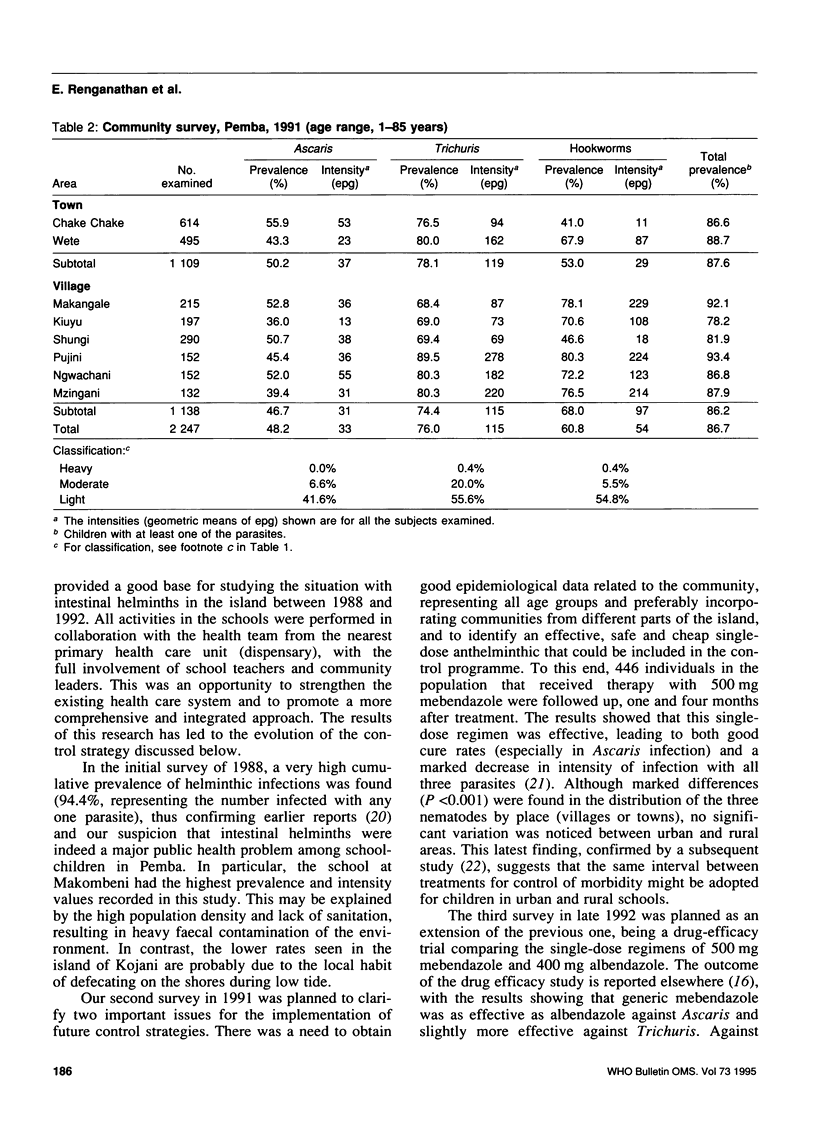
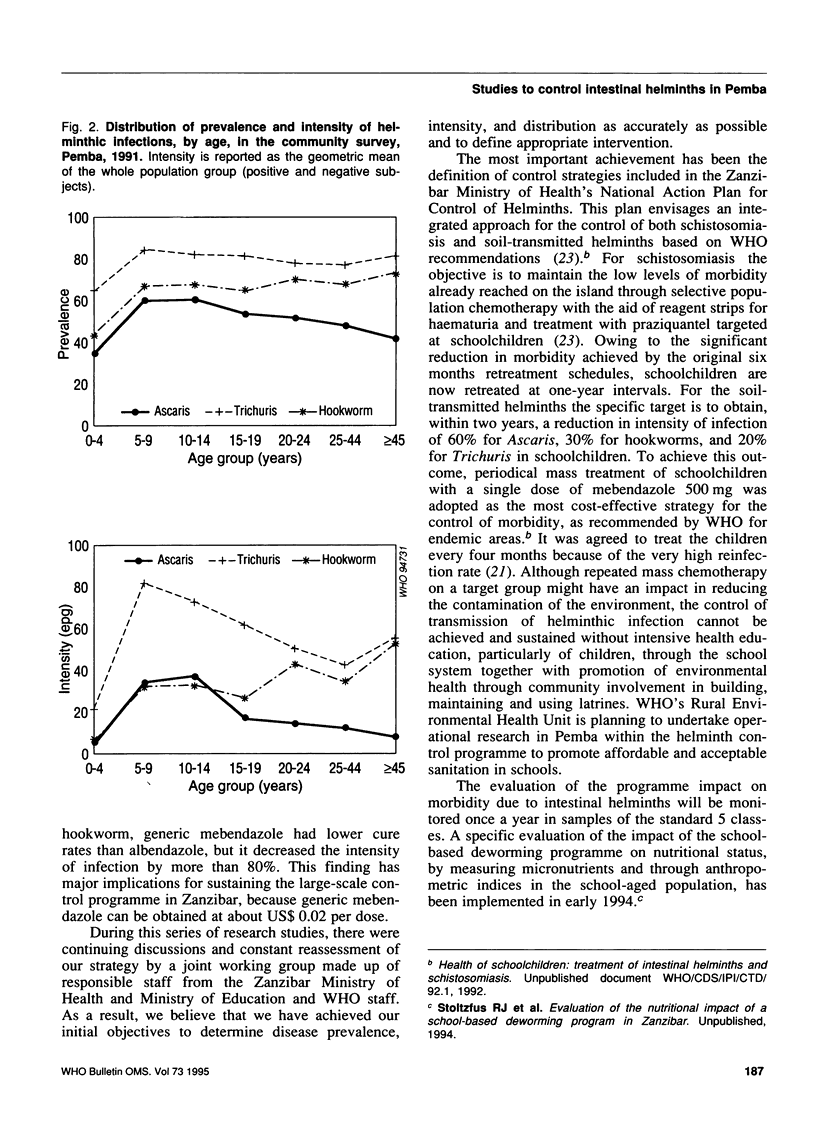
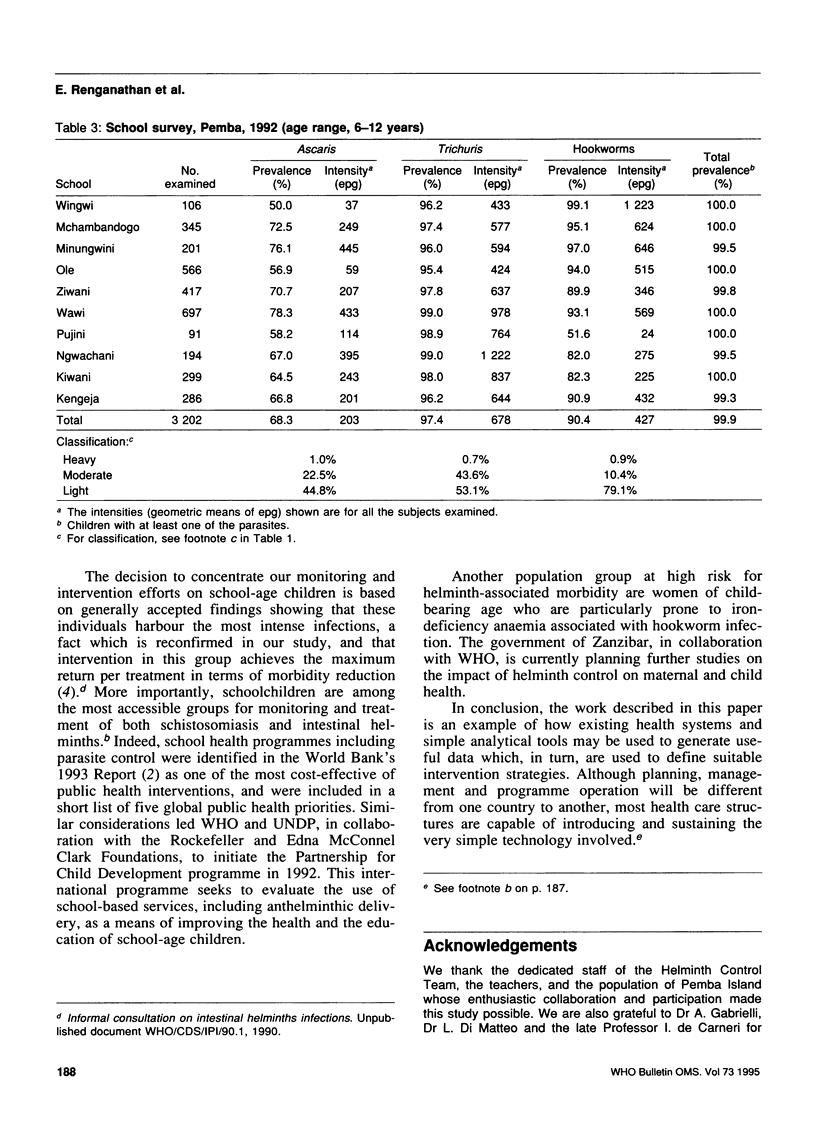
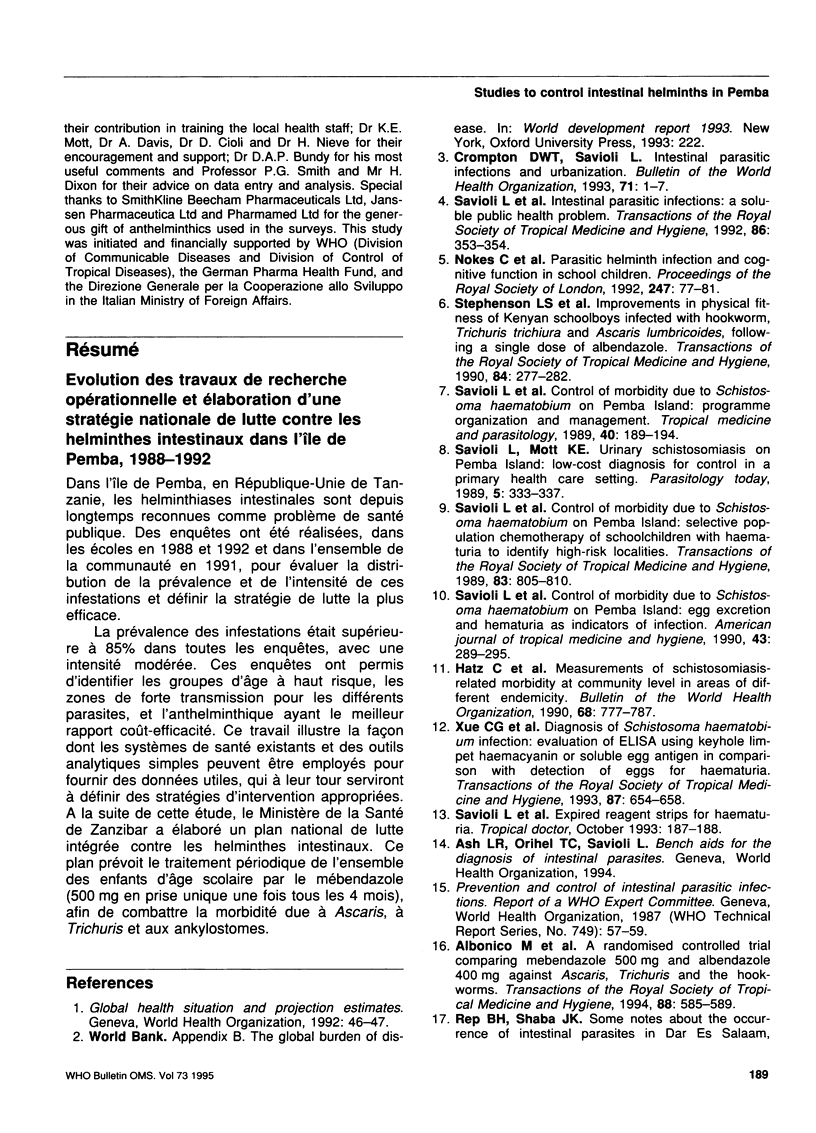
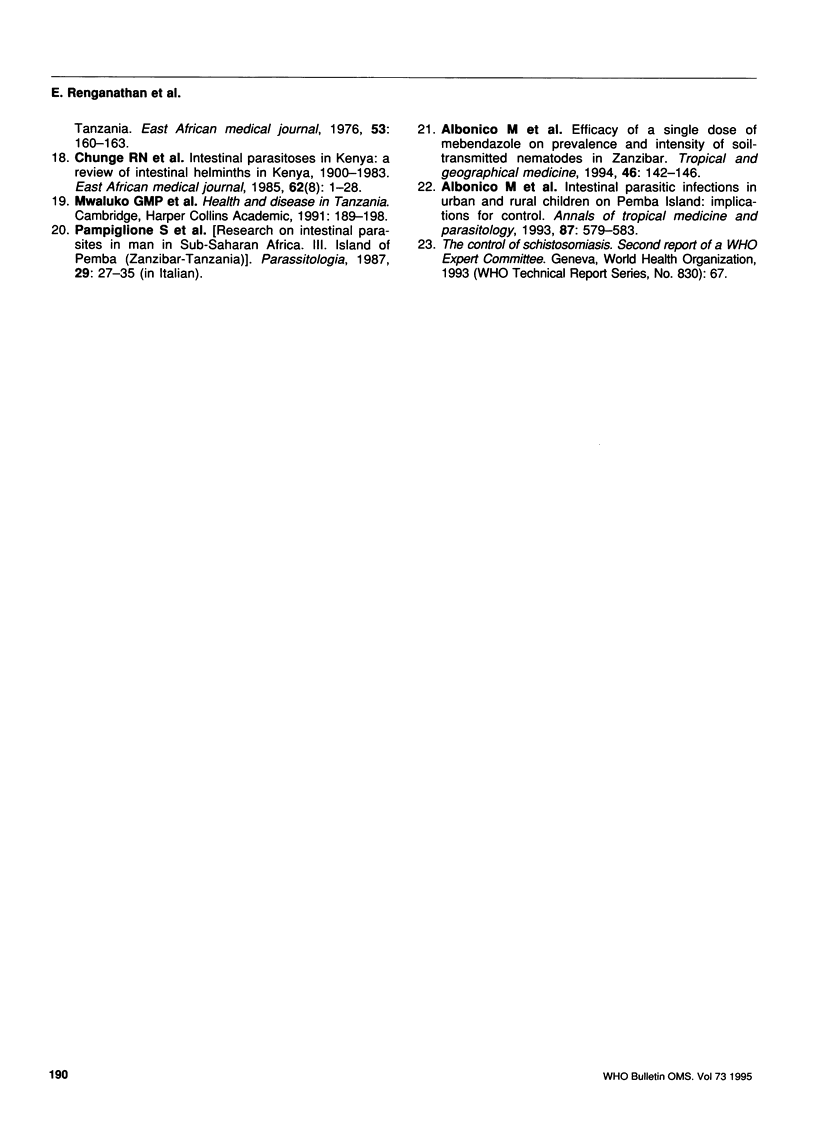
Selected References
These references are in PubMed. This may not be the complete list of references from this article.
- Albonico M., De Carneri I., Di Matteo L., Ghiglietti R., Toscano P., Uledi M. K., Savioli L. Intestinal parasitic infections of urban and rural children on Pemba Island: implications for control. Ann Trop Med Parasitol. 1993 Dec;87(6):579–583. doi: 10.1080/00034983.1993.11812813. [DOI] [PubMed] [Google Scholar]
- Albonico M., Renganathan E., Bosman A., Kisumku U. M., Alawi K. S., Savioli L. Efficacy of a single dose of mebendazole on prevalence and intensity of soil-transmitted nematodes in Zanzibar. Trop Geogr Med. 1994;46(3):142–146. [PubMed] [Google Scholar]
- Albonico M., Smith P. G., Hall A., Chwaya H. M., Alawi K. S., Savioli L. A randomized controlled trial comparing mebendazole and albendazole against Ascaris, Trichuris and hookworm infections. Trans R Soc Trop Med Hyg. 1994 Sep-Oct;88(5):585–589. doi: 10.1016/0035-9203(94)90174-0. [DOI] [PubMed] [Google Scholar]
- Chunge R. N., Kamunvi F., Kinoti S. N. Intestinal parasitoses in Kenya: a review of intestinal helminths in Kenya, 1900-1983. East Afr Med J. 1985 Aug;62(8 Suppl):1–28. [PubMed] [Google Scholar]
- Hatz C., Savioli L., Mayombana C., Dhunputh J., Kisumku U. M., Tanner M. Measurement of schistosomiasis-related morbidity at community level in areas of different endemicity. Bull World Health Organ. 1990;68(6):777–787. [PMC free article] [PubMed] [Google Scholar]
- New York Academy of Medicine Task force on health reform: the urban perspective. Bull N Y Acad Med. 1994 Winter;71(2):142–154. [PMC free article] [PubMed] [Google Scholar]
- Nokes C., Grantham-McGregor S. M., Sawyer A. W., Cooper E. S., Bundy D. A. Parasitic helminth infection and cognitive function in school children. Proc Biol Sci. 1992 Feb 22;247(1319):77–81. doi: 10.1098/rspb.1992.0011. [DOI] [PubMed] [Google Scholar]
- Pampiglione S., Visconti S., Stefanini A. Richerche sui parassiti intestinali dell'uomo in Africa Subsahariana. III. Isola di Pemba (Zanzibar-Tanzania). Parassitologia. 1987 Apr;29(1):27–35. [PubMed] [Google Scholar]
- Savioli L., Albonico M., Amour K. A., Saleh J. M. Expired reagent strips for haematuria. Trop Doct. 1993 Oct;23(4):187–188. doi: 10.1177/004947559302300431. [DOI] [PubMed] [Google Scholar]
- Savioli L., Bundy D., Tomkins A. Intestinal parasitic infections: a soluble public health problem. Trans R Soc Trop Med Hyg. 1992 Jul-Aug;86(4):353–354. doi: 10.1016/0035-9203(92)90215-x. [DOI] [PubMed] [Google Scholar]
- Savioli L., Dixon H., Kisumku U. M., Mott K. E. Control of morbidity due to Schistosoma haematobium on Pemba Island: programme organization and management. Trop Med Parasitol. 1989 Jun;40(2):189–194. [PubMed] [Google Scholar]
- Savioli L., Dixon H., Kisumku U. M., Mott K. E. Control of morbidity due to Schistosoma haematobium on Pemba island; selective population chemotherapy of schoolchildren with haematuria to identify high-risk localities. Trans R Soc Trop Med Hyg. 1989 Nov-Dec;83(6):805–810. doi: 10.1016/0035-9203(89)90336-2. [DOI] [PubMed] [Google Scholar]
- Savioli L., Hatz C., Dixon H., Kisumku U. M., Mott K. E. Control of morbidity due to Schistosoma haematobium on Pemba Island: egg excretion and hematuria as indicators of infection. Am J Trop Med Hyg. 1990 Sep;43(3):289–295. doi: 10.4269/ajtmh.1990.43.289. [DOI] [PubMed] [Google Scholar]
- Savioli L., Mott K. E. Urinary schistosomiasis on Pemba Island: low-cost diagnosis for control in a primary health care setting. Parasitol Today. 1989 Oct;5(10):333–337. doi: 10.1016/0169-4758(89)90129-4. [DOI] [PubMed] [Google Scholar]
- Stephenson L. S., Latham M. C., Kinoti S. N., Kurz K. M., Brigham H. Improvements in physical fitness of Kenyan schoolboys infected with hookworm, Trichuris trichiura and Ascaris lumbricoides following a single dose of albendazole. Trans R Soc Trop Med Hyg. 1990 Mar-Apr;84(2):277–282. doi: 10.1016/0035-9203(90)90286-n. [DOI] [PubMed] [Google Scholar]
- Xue C. G., Taylor M. G., Bickle Q. D., Savioli L., Renganathan E. A. Diagnosis of Schistosoma haematobium infection: evaluation of ELISA using keyhole limpet haemocyanin or soluble egg antigen in comparison with detection of eggs or haematuria. Trans R Soc Trop Med Hyg. 1993 Nov-Dec;87(6):654–658. doi: 10.1016/0035-9203(93)90275-u. [DOI] [PubMed] [Google Scholar]


